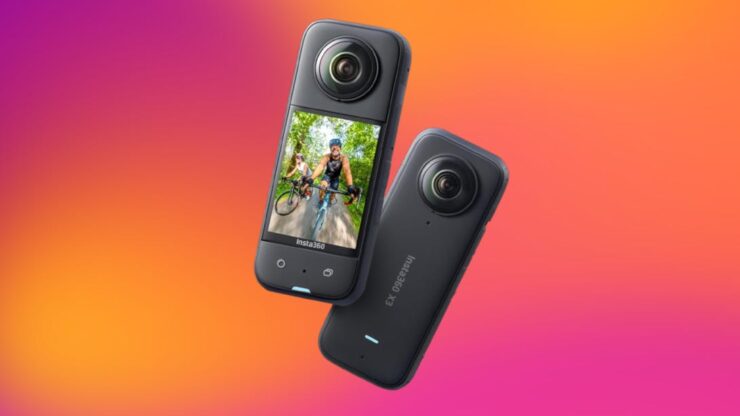On September 19, popular leaker Ice Universe dropped a potential bombshell by stating that the rumored Samsung Galaxy S24 Ultra may ditch the line’s famed 10x periscope camera. Now, in a follow-up post, they offer more insight into what the next Ultra’s camera system might instead include to fill the void.
One of the current Galaxy S Ultra line’s greatest strengths is the versatility of its camera setup, it’s why they consistently sit at the top of our rundown of the best cameraphones. Multiple years of refinement and a combination of sensors, including two telephoto cameras (a 3x and a 10x periscopic zoom), have meant Samsung’s uber-flagship has been able to take quality snaps further than practically all of its mainstream rivals. It’s the reason why – despite the unquestionable improvement to the new iPhone’s cameras, as noted in our iPhone 15 Pro Max review – the 5x zoom on Apple’s latest top-dog doesn’t quite match what its biggest rival already offers.
However, when Ice Universe suggested that the Galaxy S24 Ultra may ditch its predecessor’s 10x periscopic telephoto camera, we were left scratching our heads as to why now – with renewed competition from Apple in this department – of all times, the company would choose to nix what is one of the series’ most standout photographic features.
Telephoto solution of Samsung Galaxy S24 Ultra:3x 10MP + 5x 50MP 1/2.52″ 0.7μmThe hardware specifications are weaker than Xiaomi 13 Ultra, which is 50MP 1/2.52″ 0.7μm for both 3x and 5x.I know it’s hard for you to accept,me too, but it’s the truth.????You can place an iPhone15…September 19, 2023
Thankfully, a new follow-up post provides some hope for those already lamenting the potential loss of the next Ultra’s 10x zoom, with the above post on X (formerly Twitter) stating that the phone will still pack two telephoto lenses: a 10MP 3x zoom camera (as before) and a new 50MP 5x zoom camera.
Why this change might come about isn’t exactly clear, although the physics of bringing a larger, higher-resolution sensor into the mix might have something to do with it.
There’s also the aesthetics and ergonomics of this change to consider. As highlighted by the elaborate tetraprism that the new iPhone 15 Pro Max uses to fold the light for its 5x telephoto camera, the S24 Ultra might be adopting a lower-profile design than the Galaxy Note-inspired look of the last two generations, and to do that it has to drop the comparatively bulky 10x camera module we’ve grown used to.
Cropping back up to 10x
Even if the Galaxy S24 Ultra does make its debut with this rumored drop down to a 5x telephoto snapper, 10x optical zoom may still be within its reach through a trick that both the iPhone 15 Pro Max and the Xiaomi 13 Ultra – which Ice Universe mentions explicitly in this latest post – use: sensor cropping.
While the S24 Ultra might drop from 10x to 5x for its longest lens, this same rumor suggests that the sensor behind it will pack in five times the megapixels, giving Samsung far more room to crop in on the sensor itself and still capture a 10x telephoto image without needing a dedicated lens for it. Assuming the phone performed a 2x crop on that 50MP 5x sensor, you’d still be getting a 25MP 10x image, surpassing the S23 Ultra’s 10MP resolution by quite a margin.
Take a look at how this year’s Ultra’s 10x zoom compares to its biggest rivals:
(Image credit: Future | Alex Walker-Todd)
(Image credit: Future | Alex Walker-Todd)
(Image credit: Future | Alex Walker-Todd)
(Image credit: Future | Alex Walker-Todd)
(Image credit: Future | Alex Walker-Todd)
(Image credit: Future | Alex Walker-Todd)
(Image credit: Future | Alex Walker-Todd)
(Image credit: Future | Alex Walker-Todd)
(Image credit: Future | Alex Walker-Todd)
(Image credit: Future | Alex Walker-Todd)
As for the image quality of such a shot, that all depends on the sensor Samsung opts for (as more megapixels does not guarantee better quality images). For that, we’ll just have to wait and see if Ice Universe was right, and to lay hands on the S24 Ultra’s new camera hardware ourselves.
You might also like
Samsung Galaxy S24: latest news, rumors and everything we know so farSamsung Galaxy S23 Ultra review: indomitable showmanBest Samsung phones: top Galaxy handsets ranked

